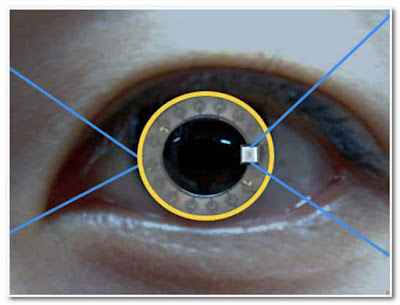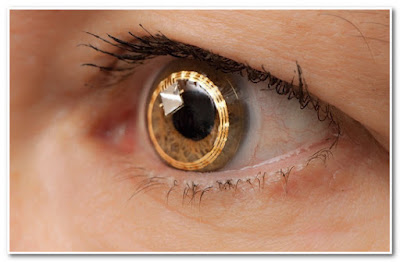It's funny how some conditions continue to use treatments that are based on techniques used for several decades, the best example is diabetes, where sufferers need to regularly monitor their glucose levels by pricking, an invasive technique and annoying for most people, but today, except for some development projects, remains the most efficient way.
Two years ago unveiled a project between Novartis and Google consisting of a "smart" contact lens, which would be equipped with a sensor to measure glucose and send the information wirelessly to a smartphone. But now we find an interesting twist to the idea of Google as just presented a system of lenses and glasses that together would measure glucose, but also be able to release small doses of medication if needed.
Improving the quality of life of diabetic patients
Sae Kwan Hahn, a professor of materials science and engineering at the Pohang University of Science and Technology of Korea (POSTECH), has just presented the project at the World Congress of Biomaterials, which has attracted attention because it could not only help diabetic patients, but could also be adapted for other diseases and their treatment, as the case of glaucoma.
The system consists of a lens made of two layers of hydrogel soft silicone, the circuits are installed on the lens ring where we have a sensor electrochemical glucose, a microcontroller chip, a delivery system of drugs and an induction coil, which it is responsible for providing power for wireless communication. On the other hand, the glasses will be connected at all times to the lens, as they will be carriers of the drug that would accommodate a dose month.
When glucose levels increase, the chip sends a wireless signal to the glasses to release a dose of medication, plus the glasses will have a small LED will light if glucose levels are too high and require user intervention.
In the first demonstration system, drug release was not automatic, the illumination of the LED the user has to use voice commands to deliver the drug, but it is expected that in the future this can be done automatically, so that the patient forget for a moment your treatment and try to lead a normal life.
In the first tests a solution of artificial tears to know the behavior of the system was placed, and the three people carrying a prototype for three weeks, not accidental drops of liquid were presented, the dose was precise and without any damage. Its creator is sure that there are companies interested in its development and it could see the light during the next year, and that thanks to that could take up to a month dose glasses could be used in a wide range of treatments.
Two years ago unveiled a project between Novartis and Google consisting of a "smart" contact lens, which would be equipped with a sensor to measure glucose and send the information wirelessly to a smartphone. But now we find an interesting twist to the idea of Google as just presented a system of lenses and glasses that together would measure glucose, but also be able to release small doses of medication if needed.
Improving the quality of life of diabetic patients
Sae Kwan Hahn, a professor of materials science and engineering at the Pohang University of Science and Technology of Korea (POSTECH), has just presented the project at the World Congress of Biomaterials, which has attracted attention because it could not only help diabetic patients, but could also be adapted for other diseases and their treatment, as the case of glaucoma.
The system consists of a lens made of two layers of hydrogel soft silicone, the circuits are installed on the lens ring where we have a sensor electrochemical glucose, a microcontroller chip, a delivery system of drugs and an induction coil, which it is responsible for providing power for wireless communication. On the other hand, the glasses will be connected at all times to the lens, as they will be carriers of the drug that would accommodate a dose month.
When glucose levels increase, the chip sends a wireless signal to the glasses to release a dose of medication, plus the glasses will have a small LED will light if glucose levels are too high and require user intervention.
In the first demonstration system, drug release was not automatic, the illumination of the LED the user has to use voice commands to deliver the drug, but it is expected that in the future this can be done automatically, so that the patient forget for a moment your treatment and try to lead a normal life.
In the first tests a solution of artificial tears to know the behavior of the system was placed, and the three people carrying a prototype for three weeks, not accidental drops of liquid were presented, the dose was precise and without any damage. Its creator is sure that there are companies interested in its development and it could see the light during the next year, and that thanks to that could take up to a month dose glasses could be used in a wide range of treatments.
















0 comments:
Post a Comment